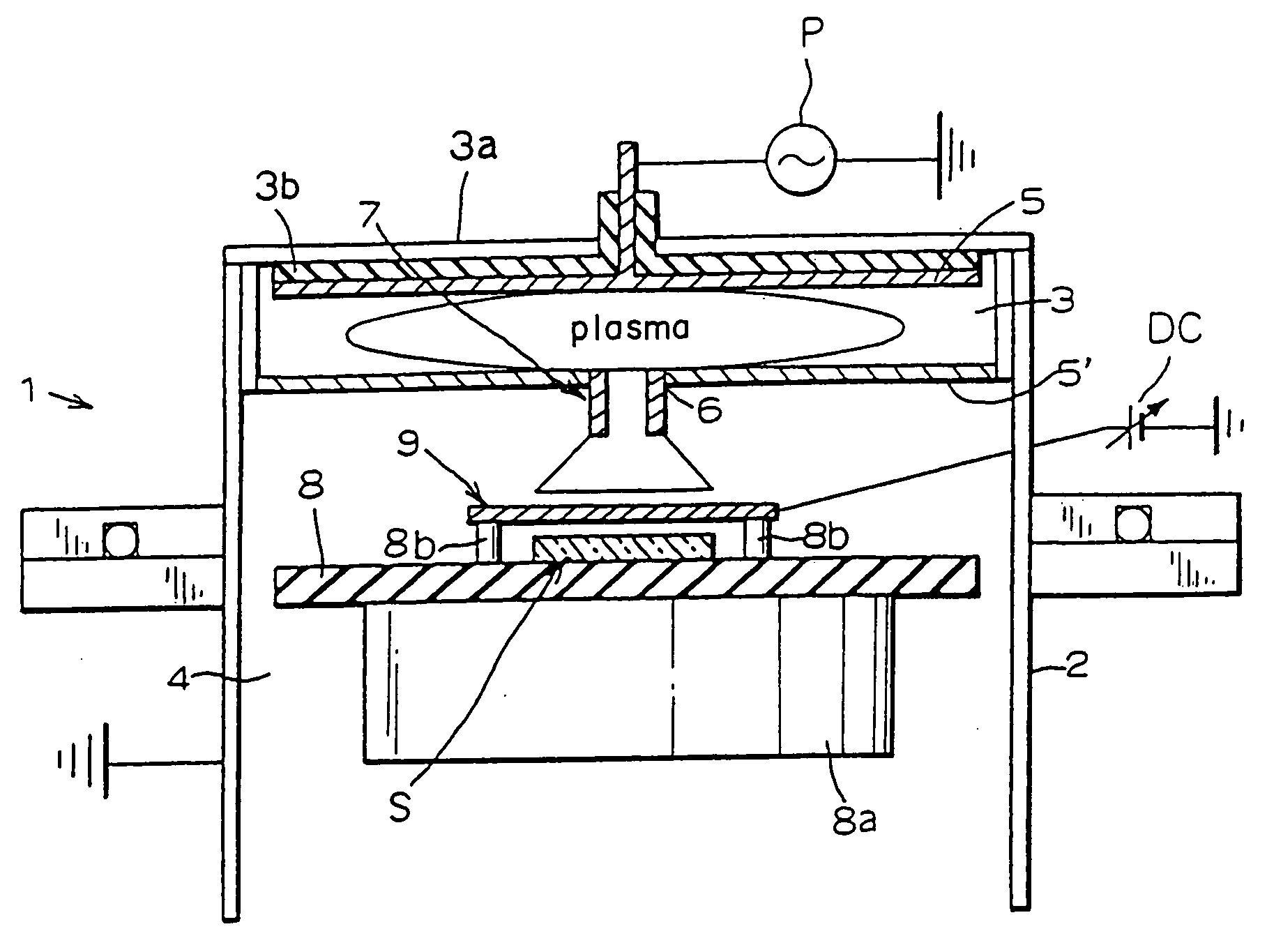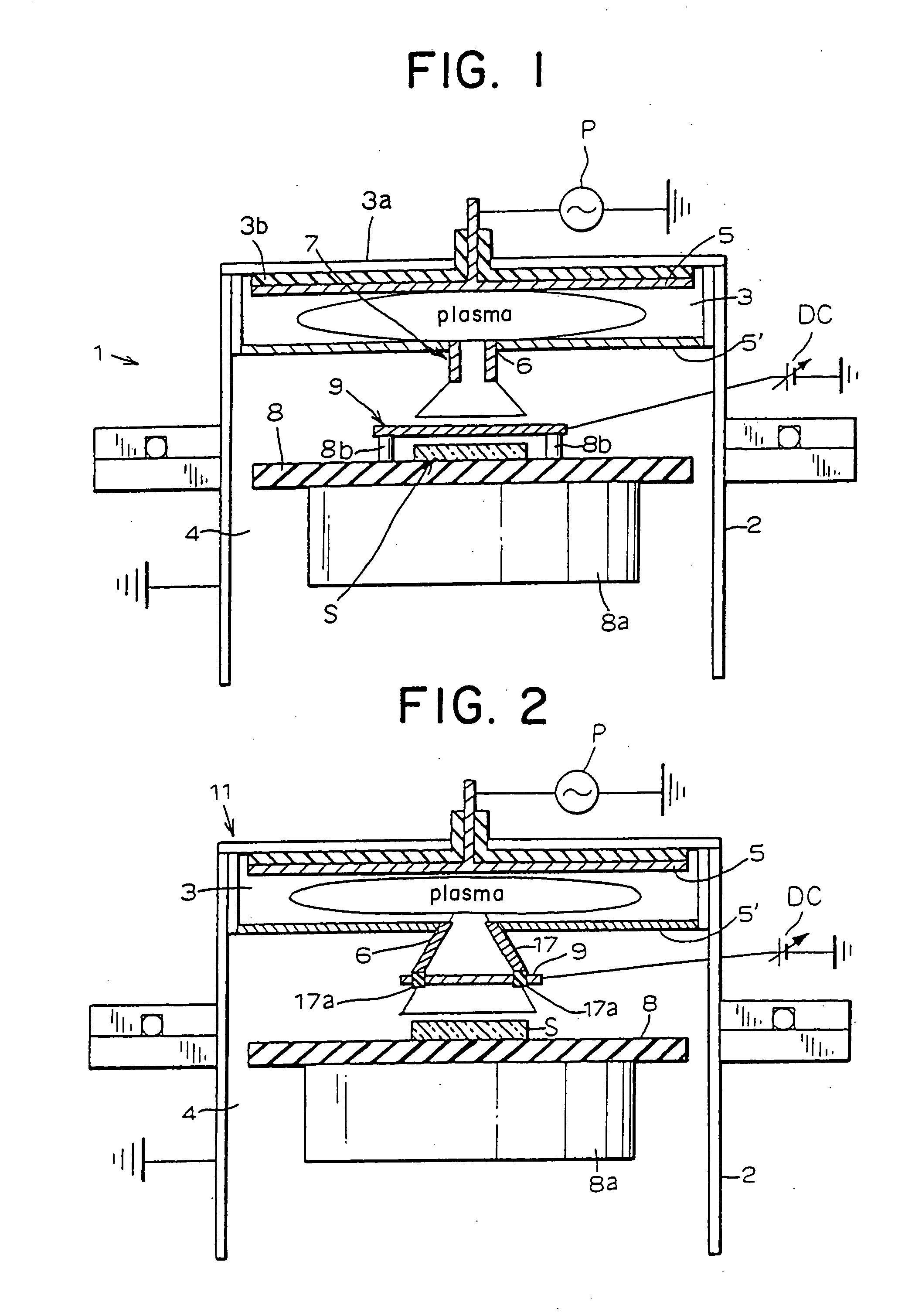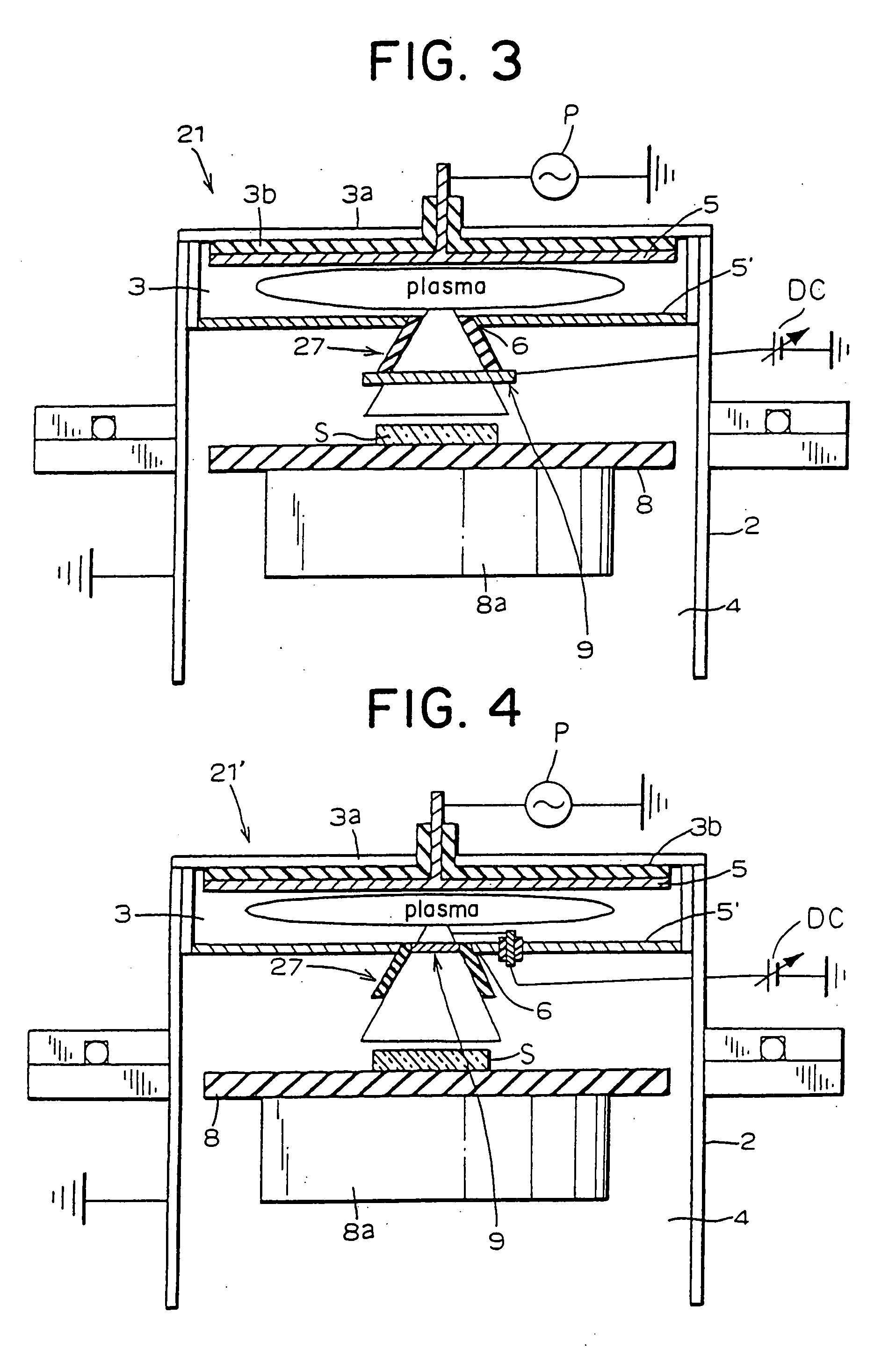Surface treatment apparatus
a surface treatment and apparatus technology, applied in the field of surface treatment apparatus, can solve the problems of reducing the number of charged particles that collide with the substrate, and and achieve the effect of reducing the damage due to collisions of charged particles
- Summary
- Abstract
- Description
- Claims
- Application Information
AI Technical Summary
Benefits of technology
Problems solved by technology
Method used
Image
Examples
first embodiment
[0046]FIG. 1 is a schematic view of a surface treatment apparatus 1 according to the present invention. In the surface treatment apparatus 1, a grounded casing 2, which intercepts the air from outside, is partitioned to two chambers, that is, a plasma generating chamber 3 and a substrate processing chamber 4. The plasma chamber 3 is provided with a raw-gas inlet (not shown) for introducing raw gas such as monosilane gas or the like. Furthermore, from the raw-gas inlet, carrier gas, which is mixed with the raw gas, is introduced in order to enhance the generation of the plasma, stabilize the plasma and carry the raw gas to a substrate S. An inlet dedicated for the carrier gas may be provided.
[0047] Further, a pair of plate-like plasma generating electrodes 5, 5′, which are connected to a high-frequency electric power supply P, are disposed in the plasma generating chamber 3. One electrode 5 of the paired two electrodes 5, 5′ is attached to an upper wall 3a of the plasma generating ch...
second embodiment
[0056] According to the surface treatment apparatus 11 of the second embodiment, a nozzle body 17, which is attached to a plasma vent 6, has a circular section and has such a truncated cone shape whose diameter extends from a plasma generating chamber 3 toward a substrate processing chamber 4. The mesh-shaped conductive sheet 9, which is connected to a direct current power supply DC, is attached via an insulating material 17a at an end face of the nozzle body 17 on a side toward the substrate processing chamber 4.
[0057] Similarly to the above described first embodiment, the surface treatment apparatus 11 of the second embodiment is also provided with a mesh conductive sheet 9 which is disposed orthogonal to the plasma flow. By applying a negative bias to a variable power supply of this conductive sheet 9, it is possible that the plus charged particles are captured by the sheet 9. Alternatively, by applying a positive bias to the sheet 9, it is possible that the plus charged particle...
fourth embodiment
[0061]FIG. 5 is a schematic view of a surface treatment apparatus 31 according to the present invention. In the surface treatment apparatus 31, a mesh-shaped conductive sheet 9 is attached in the vicinity of a plasma vent 6 on a side toward a plasma generating chamber 3 so as to cover the vent 6, while an insulating material 5a′ is disposed between the conductive sheet and an electrode 5′. In other words, the conductive sheet 9 is disposed so as to be orthogonal to the plasma, which flows out from the plasma vent 6, so that all the plasma, which flow out from the plasma generating chamber 3 to the substrate processing chamber 4, passes through the conductive sheet 9. As a result, the charged particles are excluded.
PUM
| Property | Measurement | Unit |
|---|---|---|
| Speed | aaaaa | aaaaa |
| Shape | aaaaa | aaaaa |
| Electrical conductor | aaaaa | aaaaa |
Abstract
Description
Claims
Application Information
 Login to View More
Login to View More - R&D
- Intellectual Property
- Life Sciences
- Materials
- Tech Scout
- Unparalleled Data Quality
- Higher Quality Content
- 60% Fewer Hallucinations
Browse by: Latest US Patents, China's latest patents, Technical Efficacy Thesaurus, Application Domain, Technology Topic, Popular Technical Reports.
© 2025 PatSnap. All rights reserved.Legal|Privacy policy|Modern Slavery Act Transparency Statement|Sitemap|About US| Contact US: help@patsnap.com



